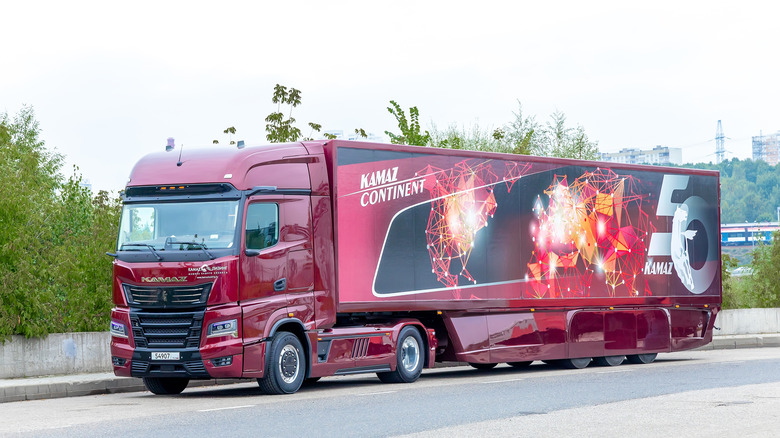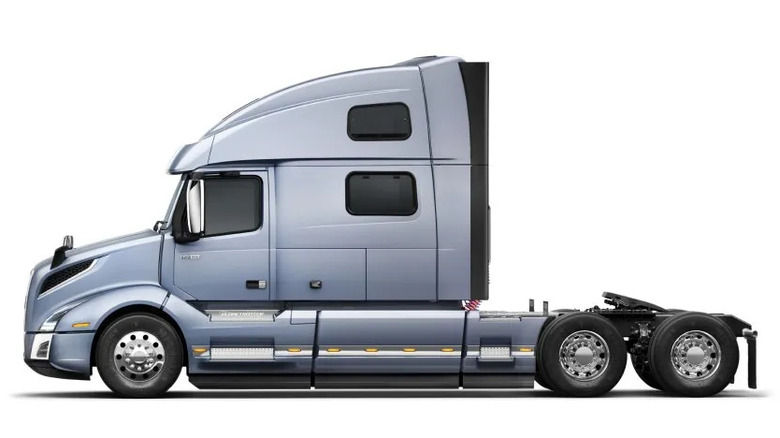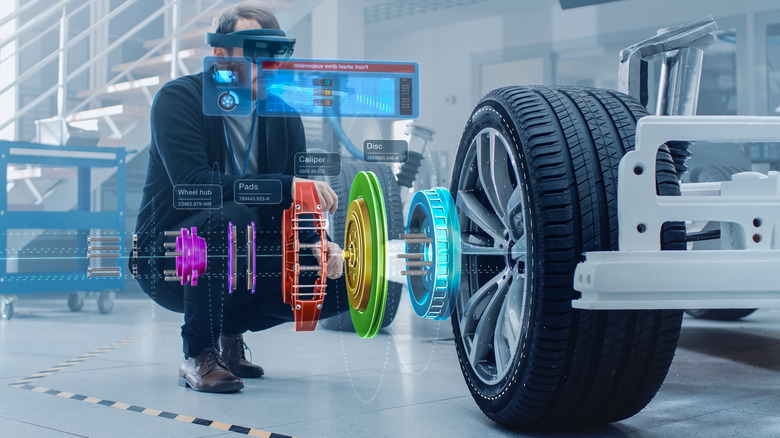How Do Hybrid Semi-Trucks Work? A Look Into The Technology Behind Them
For those of us who spend a lot of time on the road, particularly using highways and major arteries, you might have noticed an increase in hybrid semi-trucks of late. Many shipping and logistics companies are adding these fuel-efficient trucks to their fleets, similar to how taxi companies widely adopted the Toyota Prius upon its release.
The transport industry continues to look at sustainable practices while ensuring the transport of goods remains cost-effective and efficient. There are some key players in this realm developing quality hybrid semi-trucks, including Volvo, one of the carmakers with a history of making semi-trucks as well. Other notable companies include Mercedes-Benz, Edison Motors, and Hino Motors — a subsidiary of Toyota.
Though many of us have had these hybrid semi-trucks whiz past us on the freeway, they're still relatively new, and you'd be forgiven for not understanding how the technology works. Hybrid/semi-hybrid heavy-duty trucks have a recent history going back to the late 2000s and early 2010s, having since been further refined and implemented globally. They're commonly spotted on U.S. and Canada roads, in addition to Europe and the Asia-Pacific region. Let's dive into how these workhorses of the highway function to understand hybrid semi-truck technology.
Powertrain architecture for hybrid semi-trucks
Semi-truck hybrid technology uses parallel or series systems, which bring together the electric and diesel motors in symbiosis. With a parallel diesel engine, you have a diesel and electric motor driving the wheels, with the electric side assisting power-intensive operations like acceleration. A series hybrid configuration entails diesel power driving a generator to, in turn, charge batteries for the drivetrain, which powers the electric motor providing motion.
As you may know from electric cars and hybrids, from a standstill to forward movement, the torque delivery — even under load — is acute, offering strong acceleration on demand. All of the drivetrain functionality is managed by software control systems, which constantly monitor inputs via sensors for a seamless driving experience.
With some systems, as evidenced by Volvo and its long-haul hybrid trucks, the variable engine management allows the combustion engine to disengage for upwards of 30% of ride time, which in turn translates to a 5-10% gas savings. Volvo's technology also allows drivers to drive exclusively in electric mode for approximately six and a half miles, further saving on fuel consumption and lowering emissions.
These hybrid setups use battery systems (typically lithium-ion) smaller than those found in full-electric configurations, which are lighter. Furthermore, the reliance on diesel as a primary fuel source means long-haul drivers can leverage a wider network of refueling stations, allowing for a greater driving range, too.
Regenerative braking and beyond
These types of hybrid engines can leverage kinetic energy during braking, meaning the forces of braking are harnessed to then recharge batteries. Normally, the energy created during braking forces is lost as heat via the friction of the brake pads, whereas with regenerative braking technology, this energy is cleverly captured.
With this setup, the braking power is adopted by motors that use drive inverters, which can then be tuned to parasitically draw varying levels of power for battery storage. The benefit of this technology is that it not only extends the range of the truck, but also the lifespan of brake pads and rotors. In this context, batteries in hybrid semi-trucks both act as a supplier of energy and a bank for power siphoned off of brakes.
Depending on routes, logistics, and shipping companies, hybrid semi-trucks might be able to save money on fuel while reducing emissions in the process. Stop-and-start routes via busy city centers are where the electric motor's assistance, as well as regenerative braking, can help with efficiency. Overall, these types of trucks offer companies an alternative to traditional legacy semi's running purely on fossil fuel, paving the way to a greener future.


